On May 29, 1453 Sultan Mohmed and his army fulfilled the prophecy of the Prophet Muhammed that Constantinople would become a Muslim land. The Sultan crowned his conquest by converting Hagia Sophia Cathedral into a mosque.
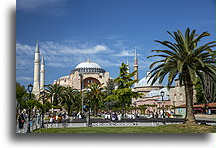
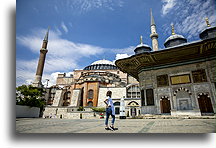
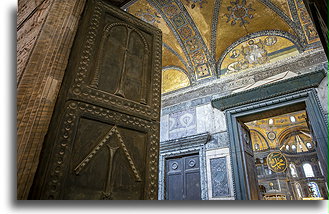
The building in its present form was constructed between 532 and 537 under supervision of emperor Justinian the Great. Hagia Sophia, the coronation site of the Byzantine emperors, was the largest cathedral in the world for nearly a thousand years. Most of the decorations survived and frescos were restored at the time when Hagia Sophia was a museum.
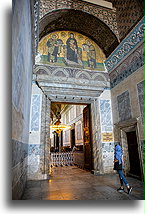
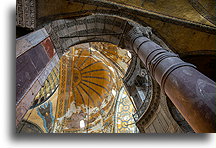
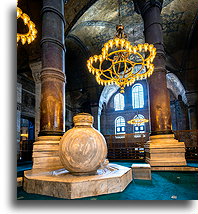
It is the finest example of Byzantine architecture. The geometric concept of the cathedral is based on mathematical formulas. Marble Jar and slabs were imported from various parts of the Mediterranean basin. The abstract patterns on the walls were created by precisely cutting stone blocks into pieces and placing them side by side like the open book.
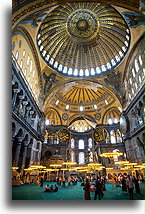
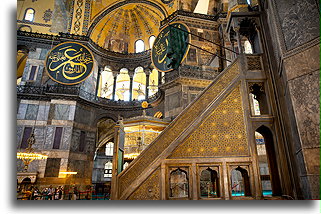
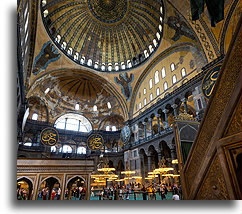
Among many mosaics, the most notable are the six-winged angel, the seraphs on each of the four pendentives of the main dome. The 10th-century mosaic at the entrance also deserves attention. It shows the Virgin Mary with the Child and two Byzantine emperors. Constantine the founder of Constantinople stands on the left and Justinian I, founder of Hagia Sophia on the left.
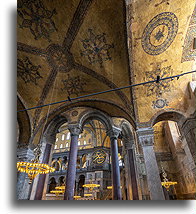
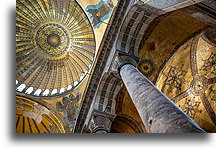
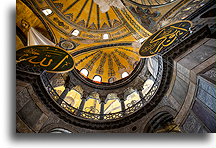
Like many other churches in Turkey, Hagia Sophia was converted into a mosque. A common problem for Muslims is that the church buildings are not oriented towards Mecca. The Byzantine churches are situated towards Jerusalem. The angle of deviation from Istanbul is only about 5 degrees, which means that in the transformed Hagia Sophia, the mihrab (prayer niche) is to the right of the altar's original position. The direction of Mecca is also marked on the floor. This helps Muslims to get into the right position for a prayer.
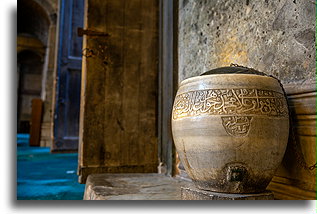
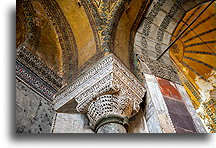
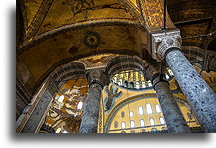
During the Ottoman Empire, the Turks removed Christian symbols and installed Islamic accents in Hagia Sophia. These are not only tall minarets and a cleansing fountain at the entrance. The Islamic accents inside include the mihrab (prayer niche), the minbar (raised platform), the prayer space for the Sultan, and of course the prayer rugs that cover the original 6th-century stone floor. Jars for cleaning were also installed. In the 16th century, two huge marble Hellenistic jars were brought from Pergamon. Each of them was carved from a single piece of stone in the 3th century BC. It is said that it took three generations of craftsmen to complete the job.




